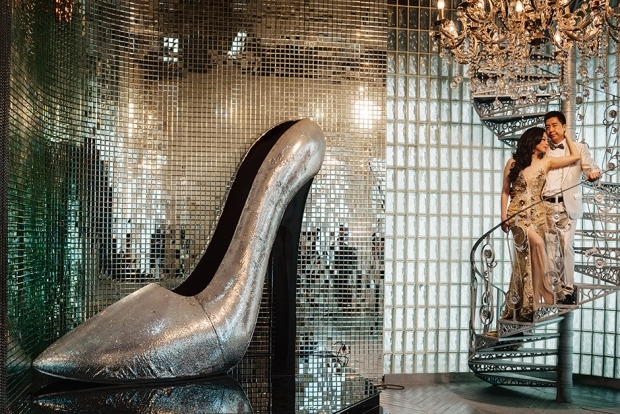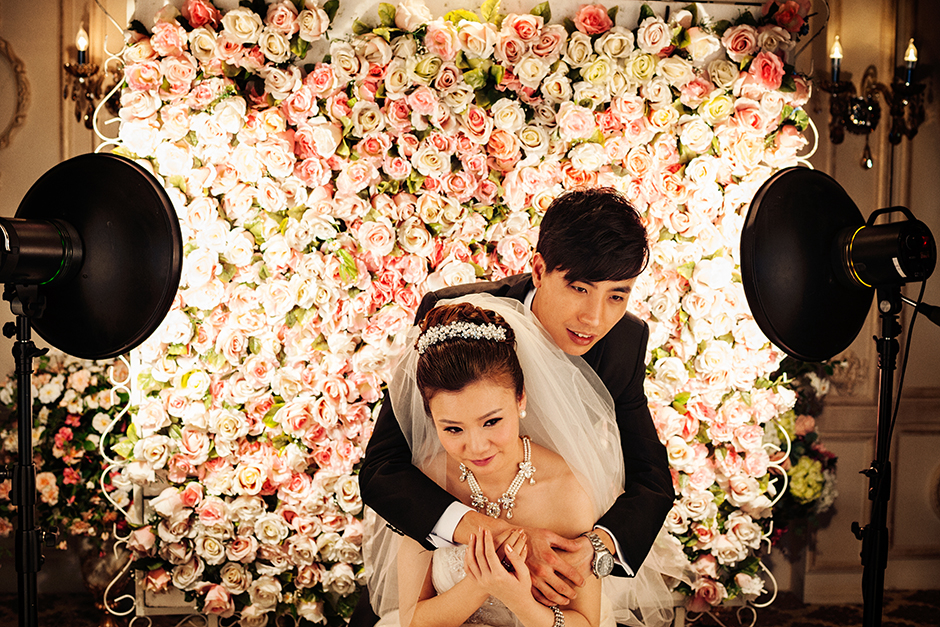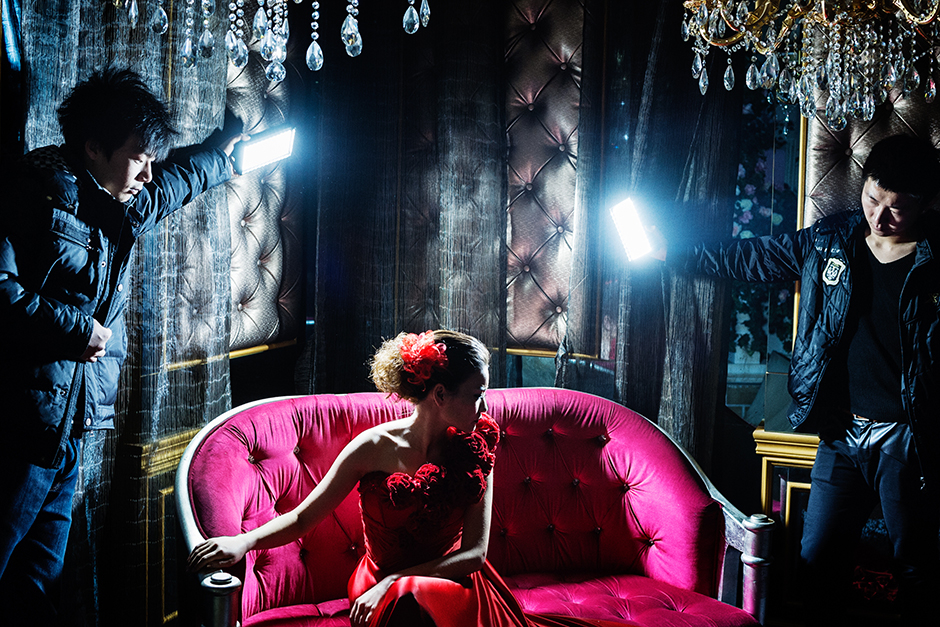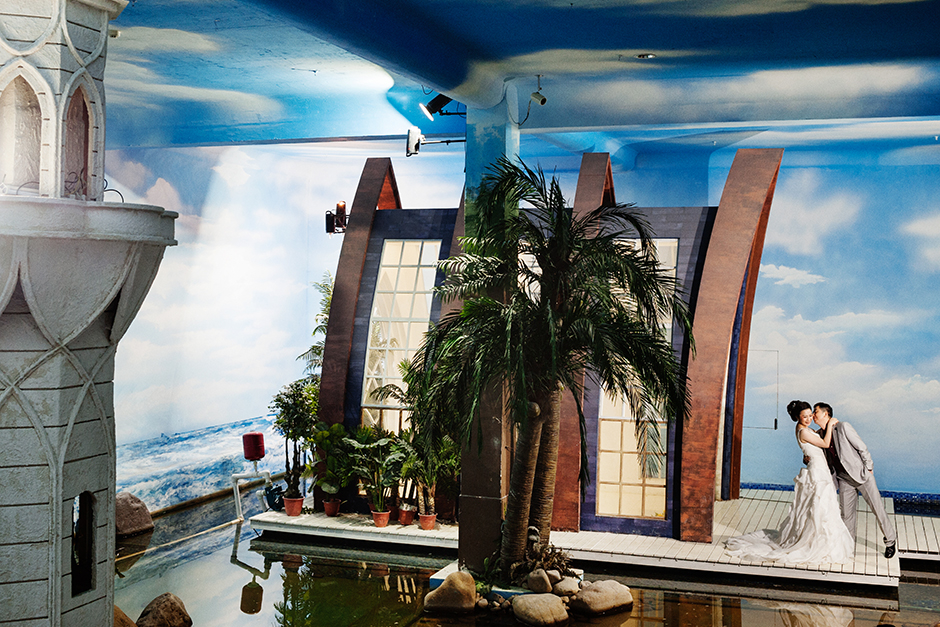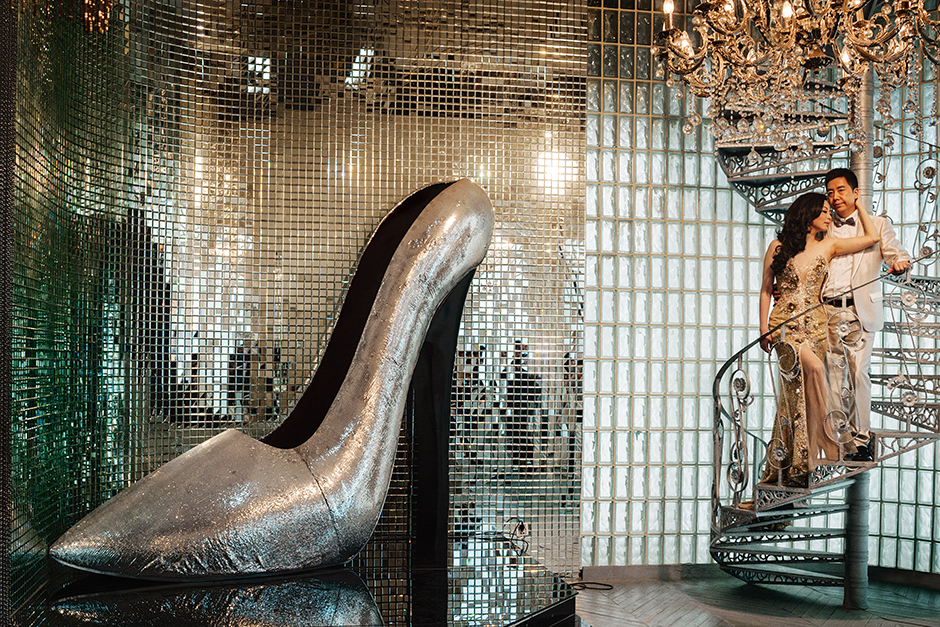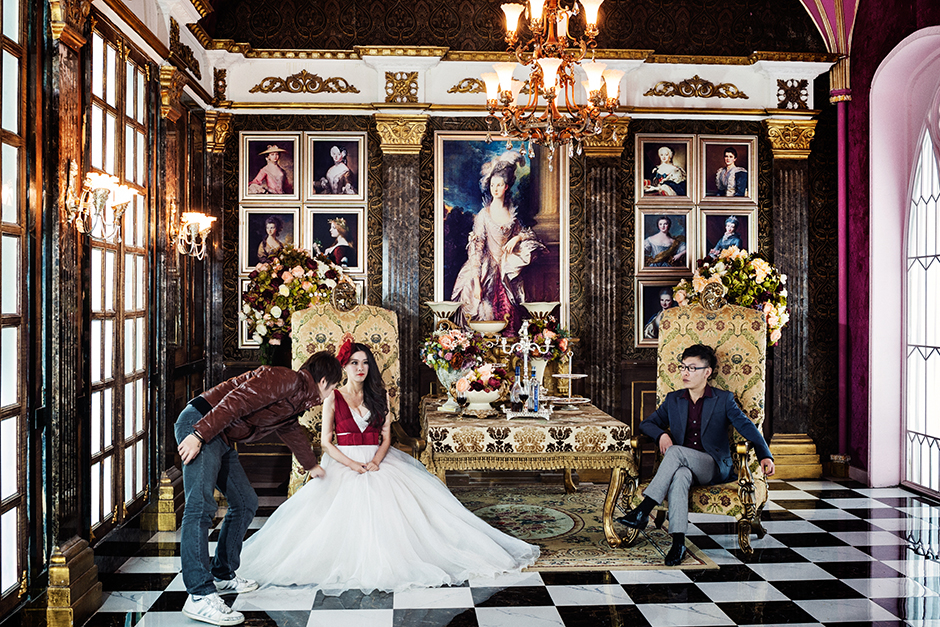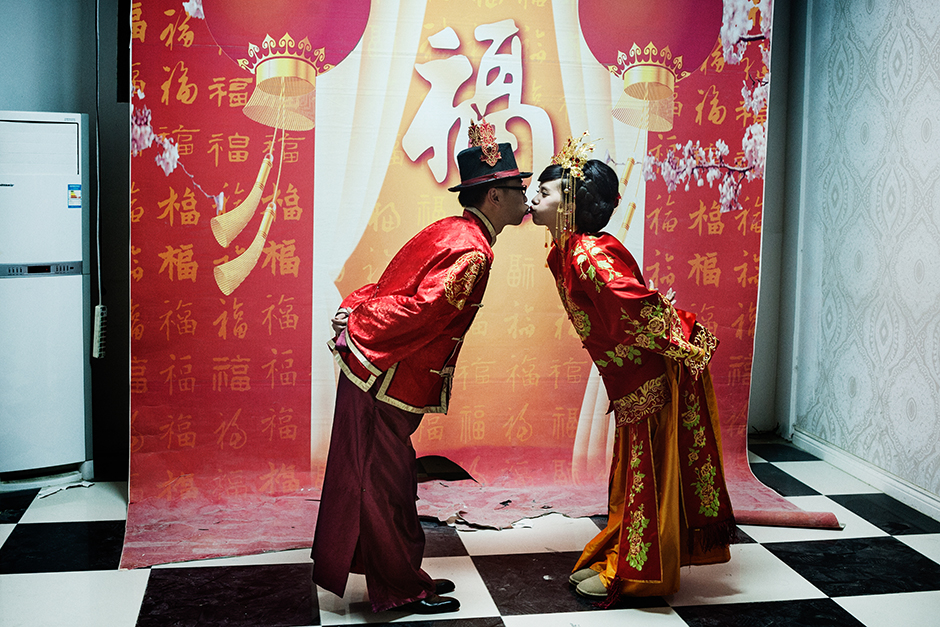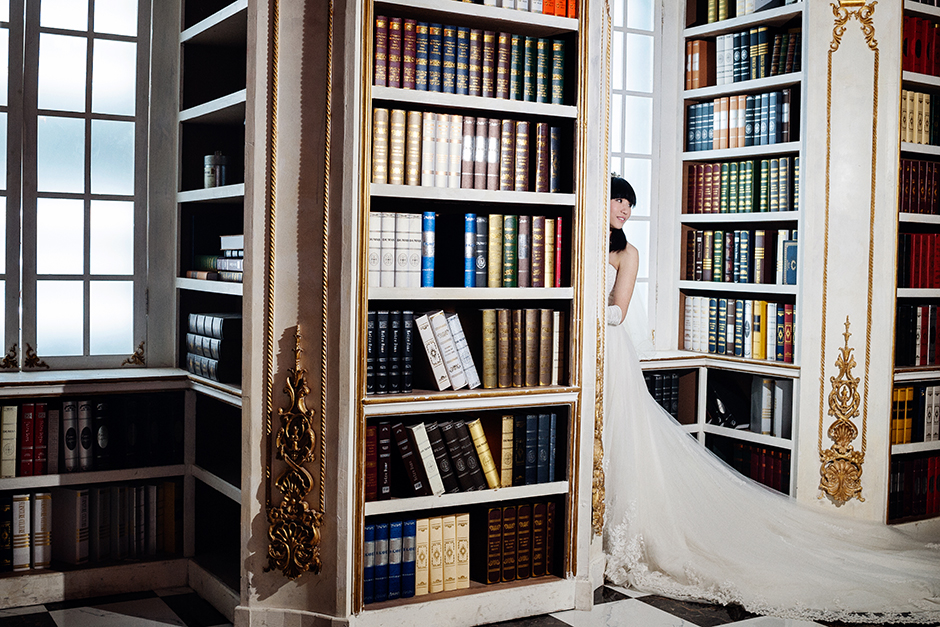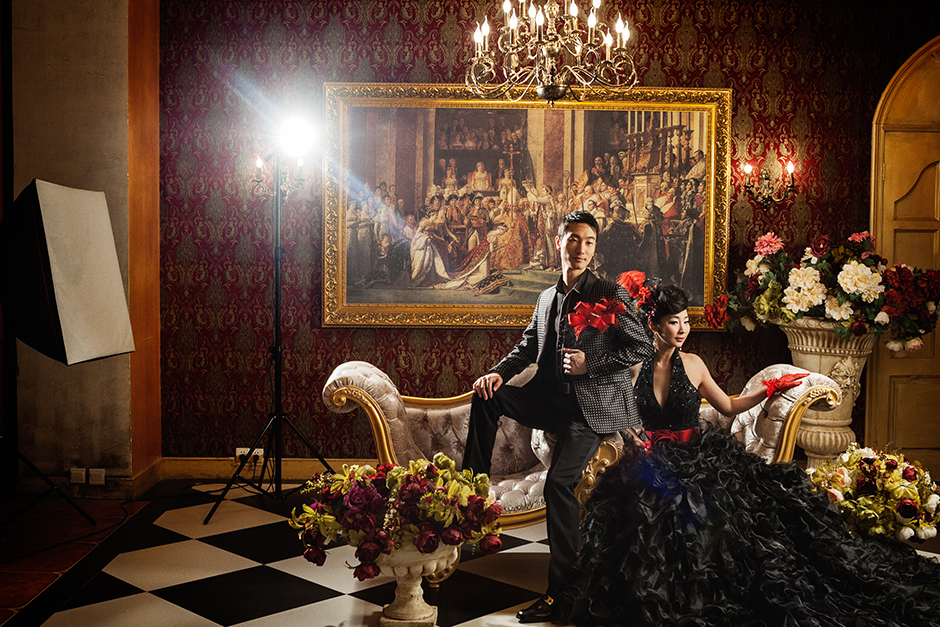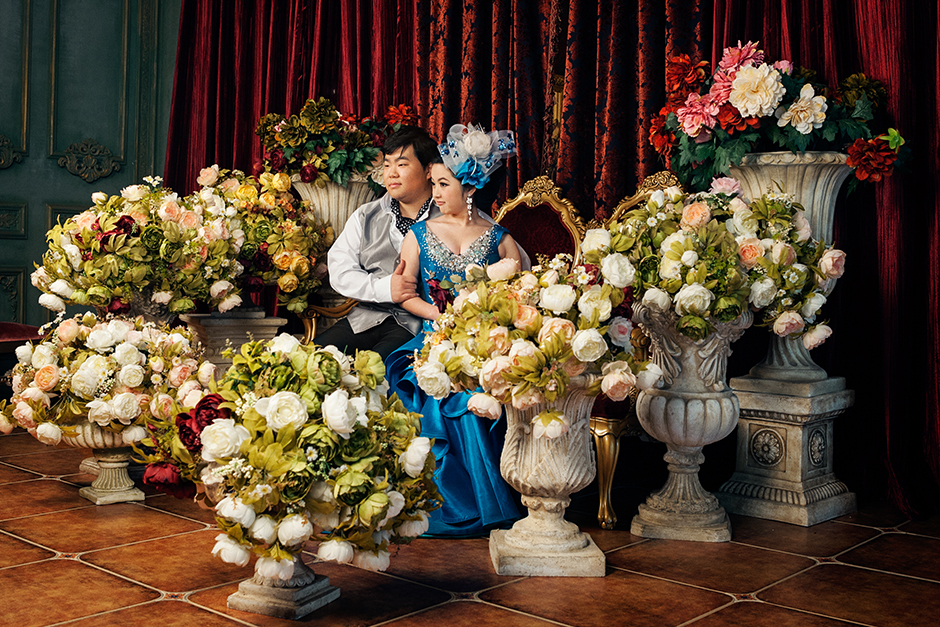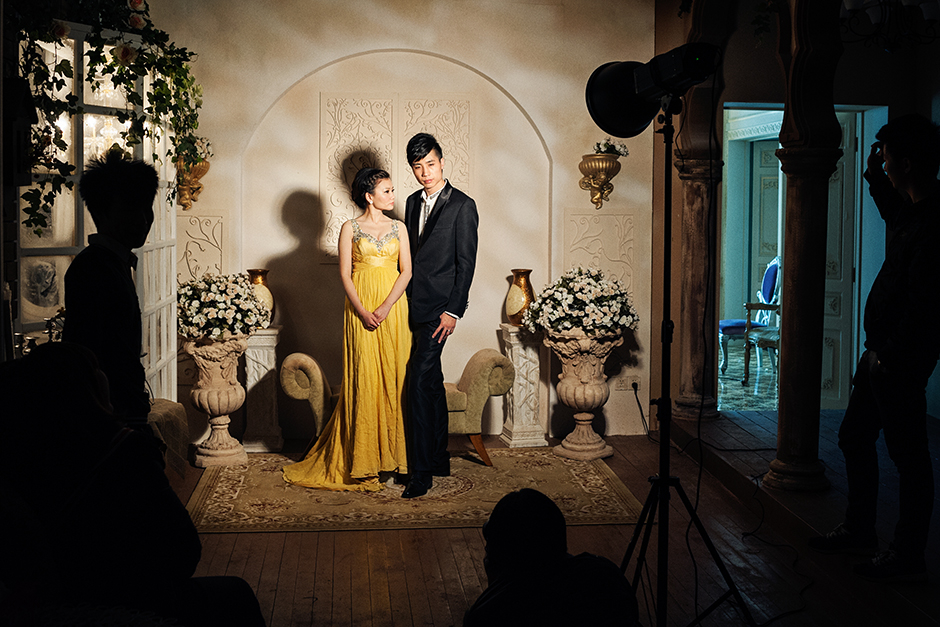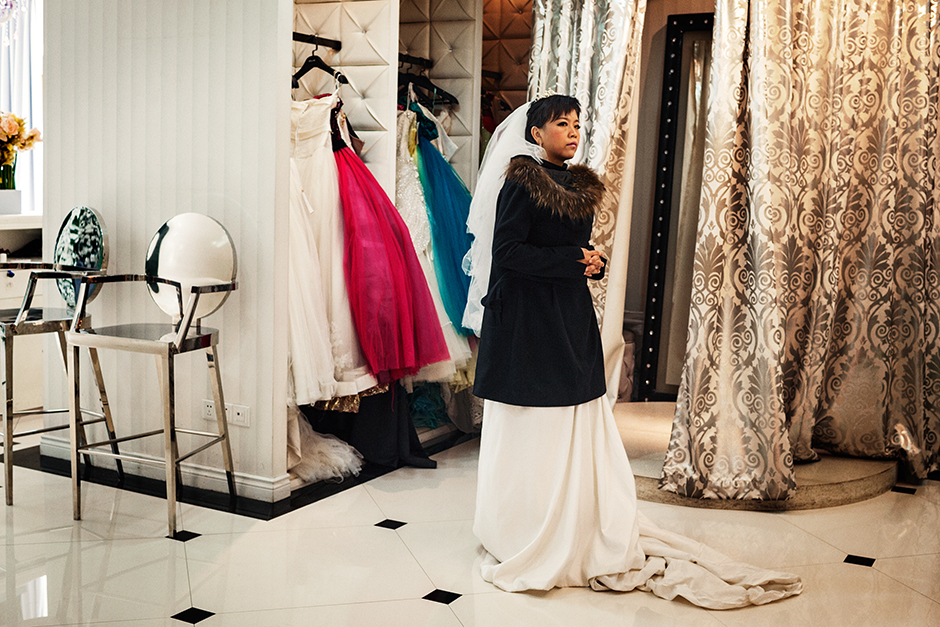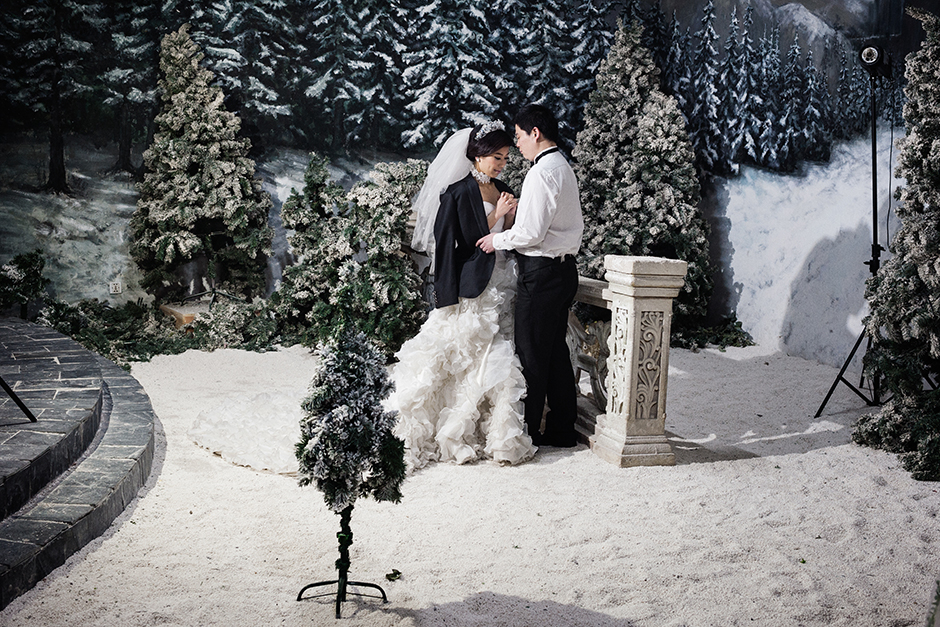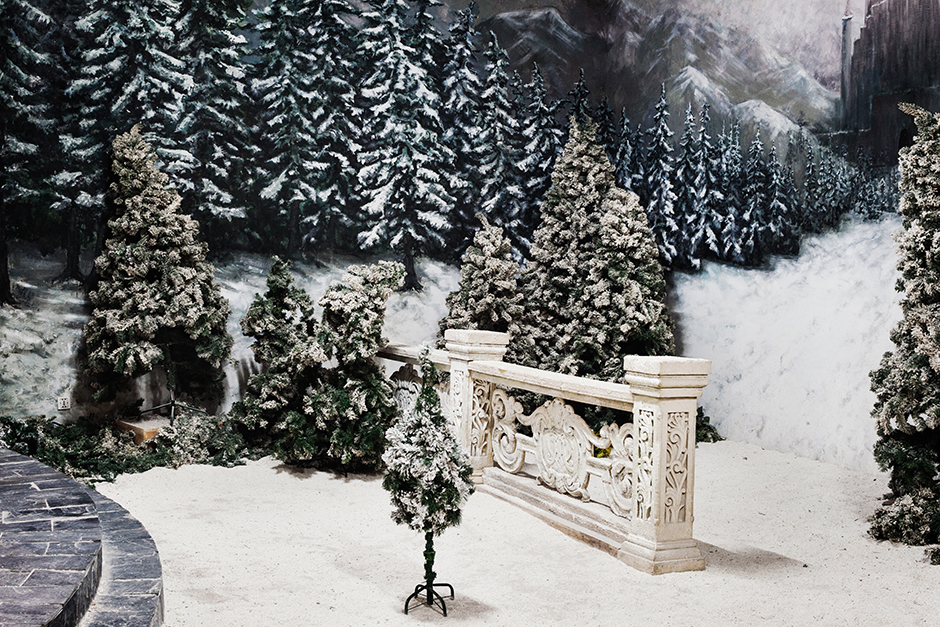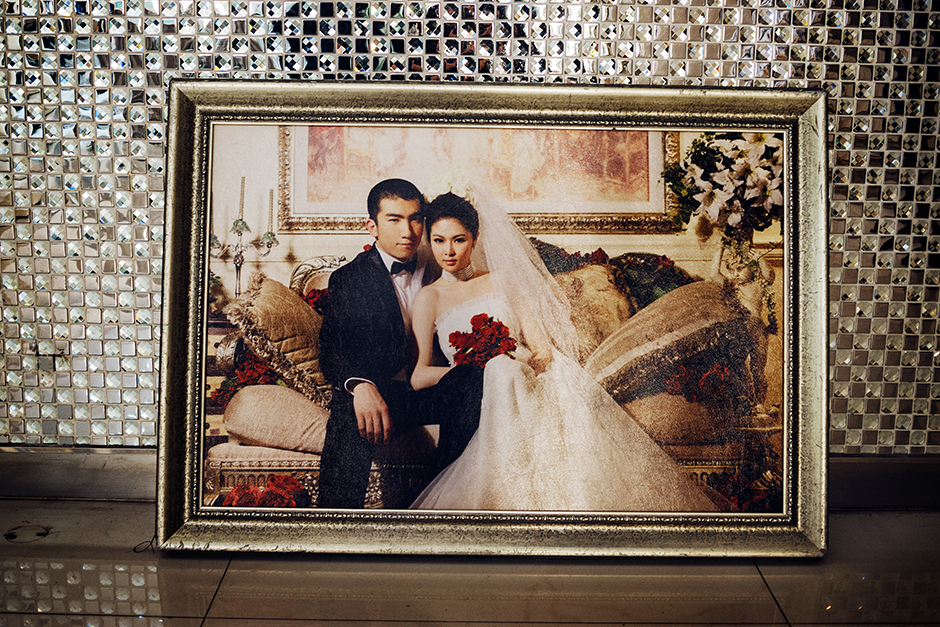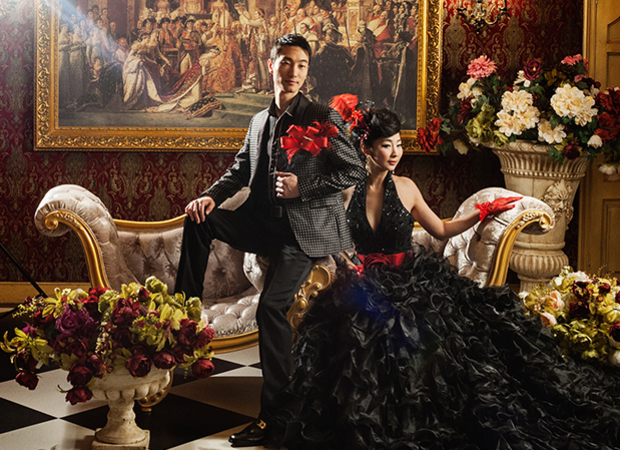Under the harsh glare of a studio spotlight, bride-to-be Tong turns her face until it is almost completely in shadow. Tong is posing for a three-day session of wedding photographs at Shanghai’s premier Princess Studio, where couples spend between 3,000 RMB (U.S.$500) and 130,000 RMB (U.S.$21,000) to create extravagant mementos in fantasy settings of what may be the most important milestone in their lives. Yet in this rendering by French photographer Guillaume Herbaut, the carefully staged vision of marital bliss has gone awry.
Two men stand in the shadows above and on either side of a bare-shouldered Tong, twenty-nine. They are clad in black like police officers and the way they aim their lamps at her suggests an interrogation. The light reflects conspicuously off a spot between the legs of the man on the right as he examines the bride-to-be, adding another layer of menace to the scene. Tong’s wedding dress is in the traditional Chinese color of deep red, but the flowers on her bodice and in her hair are more reminiscent of the tragic heroine of Georges Bizet’s opera Carmen, who ends up killed by her jealous lover.
This, I imagine, is not the picture that Tong would want to display in her formal wedding album or on her living room wall for visitors to admire throughout her married life. But it and the other images in Herbaut’s series of what might be called “meta-wedding photos” get underneath the glossy surface of romance and fantasy that characterizes these talismans to lay bare the transactional, business-like, and at times exploitative nature of marriage in contemporary Chinese society.
Some of Herbaut’s images are sheer fun. The same bride-to-be, Tong, appears transformed in another picture, this time wearing a white wedding dress while romping playfully with her groom, Cai, before an explosion of pastel roses. The photo featuring Tong in a mustard evening gown, gazing adoringly at her groom, would make a perfectly conventional wedding portrait, were it not for the extremely wide camera frame. In Herbaut’s rendition, the wedding studio’s intimidating spotlight and production paraphernalia take center stage, casting dark shadows behind the couple, which are mirrored by sinister outlines of a photographer and two studio assistants looming large in the foreground.
Herbaut’s photographs implicitly remind us of the many young women who—out of duty or fear of being ostracized—do not question the assumption that they must marry.
In other, wealthier parts of East Asia, such as Japan, Hong Kong, Singapore, South Korea, and Taiwan, women are delaying or rejecting marriage altogether. But in China, studies so far show that almost everyone still marries by age thirty-five. Sociologists Wei-Jun Jean Yeung and Shu Hu wrote recently in The ANNALS of the American Academy of Political and Social Science that thirty to forty percent of Chinese still agree that “a bad marriage is better than being single,” according to their analysis of the Chinese General Social Survey of 2005-2008.
Although some progressive, urban women are defying intense pressure to marry, many university-educated women are like Chen Jie, a twenty-five-year-old consultant in Shanghai who can rattle off an itemized account of her upcoming wedding expenses: the banquet for 180 people costs around 70,000 RMB [U.S.$11,400]; the limousine, 5,000 RMB; the wedding dress, 1,600 RMB; wedding makeup and photography, 8,000 RMB. Her tab, which totals well over U.S.$14,000, is modest compared with the weddings of other urban, well-to-do Chinese couples. “We want a simpler wedding that isn’t too exhausting,” says Chen, who is one of the subjects of my Ph.D. research on marriage in China and who asked that I not use her real name. “When you look at what my colleagues pay, we’re not spending much at all.”
Chen never dated anyone while studying at one of China’s top universities. Her parents had always encouraged her to focus on her education. She was their only child, and they did not want her to be to be distracted by romance. Upon graduation, Chen landed a plum job as an IT consultant at a multinational company, then worked hard to get promoted. One day, a business partner eleven years her senior asked her if she wanted to get married and buy a home together.
“I’m supposed to get married at this age, so I said yes,” says Chen, who still has the splotchy complexion of a teenager. What about love? That’s not a topic Chen is keen to discuss. Since Chen is already twenty-five, she and her parents agreed that if she did not jump at the chance to marry now, she might become a “leftover” woman or sheng nü, as females too old to be considered desirable marriage partners are commonly called in China.
Given the pressure to marry and the rapidly rising number of middle-class consumers, it is no wonder that Chinese spend around U.S.$57 billion annually on weddings, according to the China Wedding Industry Report. Shanghai’s The Only Studio photographs eighty couples a day and features 300 employees—photographers, costume designers, makeup artists, and hair dressers—working on three floors of sets, which include a fake winter garden, fake church, and fake Greek island.
At The Only Studio, against a background decorated as though it were a room in Versailles, an assistant dressed in casual jeans and sneakers smoothes out the perfectly arrayed white wedding gown of the bride-to-be, twenty-eight-year-old Cheng, who sits staring ahead like a heavily made-up marionette. The man seated next to her rather indifferently and out of costume is her groom, thirty-three-year-old Zhang. His identity is irrelevant; he could just as easily be another stage hand. The bride is the one who wears the fancy princess costume, acting out a fantasy of royalty and romance. Absent from the demeanor of both the bride and groom is something that one might normally associate with a wedding photo: joy.
No matter. What counts in this setting is that the bride is being prepared for a rite of passage, her assumption of her proper role in society, as a respectable and wealthy wife like the ones in the portraits of eighteenth-century Europeans on the ornately decorated wall behind her. Is that Marie Antoinette in the large painting to her right? And if so, does the look of terror in the bride’s eyes suggest she knows the French queen was beheaded? Probably not. And Herbaut doesn’t tell us. But he does leave our own eyes hovering between the two women, searching in vain for signs that the Chinese bride can look forward to a brighter future.




